Much like young children, two-year-old horses are still immature in mind and body. Their minds wander, and patience is still an ungrasped virtue. It is not surprising, then, to consider that those with little experience in trimming have not yet learned the skill of balancing on three legs. Any hoof trimmer is taking his/her well-being into risky territory when attempting to trim young horses that have not been trained properly by their owners.
The truth? Most hoof care professionals are afraid, myself included. We navigate our days with an underlying fear of getting hurt while being under a 1,000-pound animal whose behavior we often cannot control. This fear drives certain behavior patterns that only surface under this unique set of circumstances.
Fear of failure, fear of injury, fear of income loss, fear of the unknown… fear creates an escalating ladder of emotions that include:
- Annoyance
- Impatience
- Anger
- Loss of Control
As trainers, farriers, veterinarians, or trimmers, when we feel ourselves moving deeper and deeper into the escalation of fear, our greater logic tells us that we need to walk away from the situation.
Similarly, while horses lack the ability to reason or logically analyze a situation, they experience comparable feelings that result in fear, defiance, anger, or aggression. Their fear can be caused by a number of factors including:
- Lack of experience
- Prior neglect or abuse
- A new environment
- A new owner, trimmer, farrier, trainer
- An angry human
On a side note, physical pain can also cause fear and, therefore, fear-based behavior. In these cases, we need to identify and treat the source of that pain.
While horses may display similar behavior from one to another, the underlying reasons for that similar behavior can be vastly different. It is helpful to learn the history of specific horses to deal with specific behaviors. Studying the horse’s body language, and most importantly, interpreting the expression in their eyes, are both key to correctly confronting the behavior while avoiding major harm to the horses and ourselves.
Below are three key primary causes for unsafe behavior of horses:
- Fear-Based, Inexperienced, or Ignorant Horses
When a three-year-old horse cow kicks the hoof trimmer, it most likely is acting out of fear or ignorance. It needs additional love, reassurance, and training. When it jerks the hoof away or leans into the human, it may simply be unbalanced, having not yet learned to stand on three legs. A healthy dose of patience, compassion, and understanding is required. Talking to the horse in a soothing tone with gentle touches will often get the job done.
2. Hierarchical Herd Challenge – Who is Alpha?
A more experienced and self-confident horse’s approach to these new things is different. They might want to test the waters and see how far they can push in order to establish a new pecking order. For example, when a 12-year-old seasoned horse cow kicks or bites, it often acts out of defiance, trying to establish dominance over the human. This horse needs discipline, and the rank order needs to be reestablished.
Equality does not exist in a horse herd. Horses categorize both humans and equine counterparts in a hierarchy. It is imperative that we humans remain on the top of the ladder from a safety perspective. Imitating the behavior of the alpha mare in the herd will reap good results. What behaviors do top-ranked horses display to maintain their rank? What do mares teach their youngsters? You’ll see laid back ears, biting, broad-chested approaches, and a swift turning of the hindquarters, often followed by kicking. This is the language of horses. Imitating this behavior as humans will reap positive results.
A defiant, senior horse challenging us for a higher standing in the herd should be disciplined within three seconds of the punishable offense. If we fail to provide that discipline within three seconds, we are essentially yielding our standing as a leader. After three seconds, the horse will no longer associate the punishment with its behavior, and it will resent the human for it.
3. Overly Aggressive and Dangerous
Only a very small percentage of horses are inherently aggressive. Most horses in this category develop their aggression through human interaction, either through abuse or through a lack of training and boundaries from a young age.
A horse that cow kicks, strikes, or bites indiscriminately is an aggressive horse that needs remedial training.
Below are a few photos of horses’ eyes and facial expressions that allow us a glimpse into their souls. If we pay attention, horses will teach us where they are coming from and allow us to make an educated decision about how to proceed, regardless of our role as equine servicers or enthusiasts.

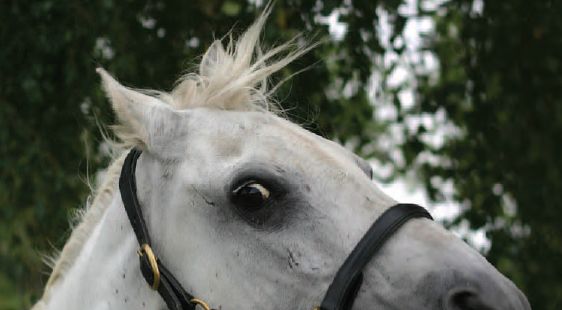
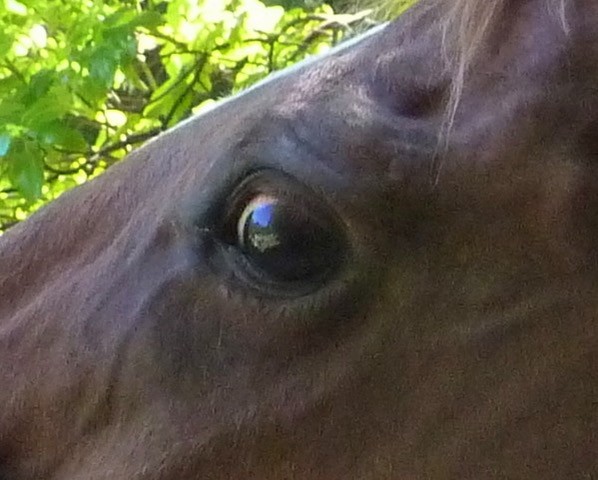


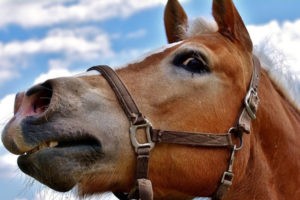
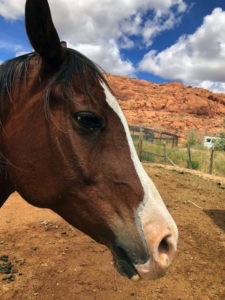

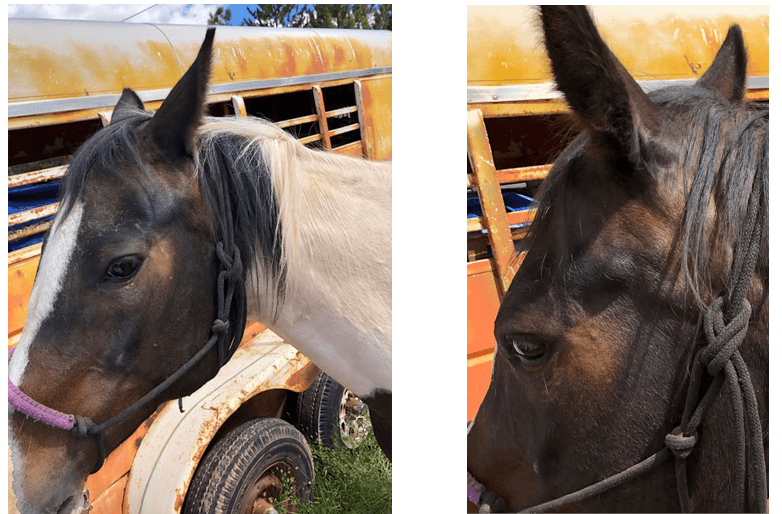
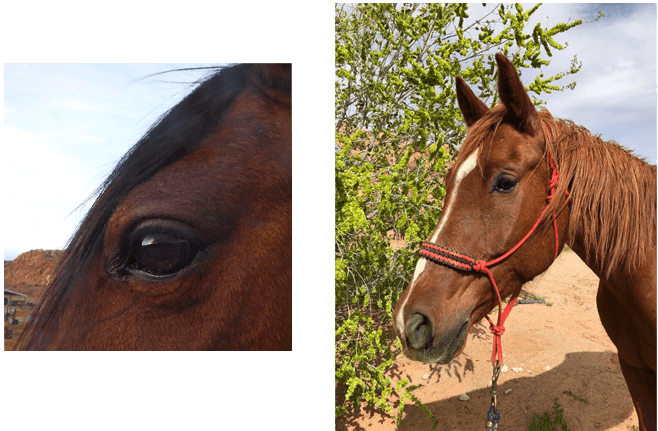


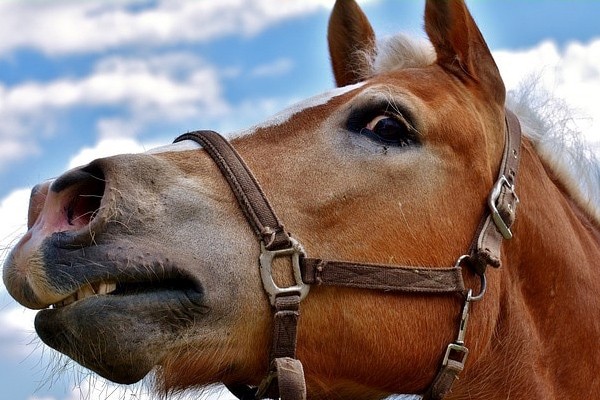



Great article. Would just like to mention, that any horse with undiagnosed laminitis, or with wrongly distributed weight because of an undiagnosed limb problem (inherited or acquired) is liable to be very worried &/or annoyed if expected to keep one of the sound supporting legs off the floor for more than seconds. Knowledge of changes in muscle structure (eg over-developed pectorals from hind end problems) & hoof size/shape differences(eg wider, flatter from extra weight-bearing paired with a boxier one) would be helpful. My horse suffered 7 years -from starting work – & around 20 chiro ‘fixes’ & three vet work-ups (all said he was sound, one had just qualified in specialist equine osteopathy) until I found a vet who spotted he was bi-laterally lame- with an inherited stifle condition. One hind was lame because it had twice the work to do. His fronts were sore from protecting his hinds. Strangely, vets don’t seem to be taught bio-mechanics & related body changes which are obvious in such cases. The changes in my horse’s feet over the years, as he coped then mended after an op, have been very telling. Hope this info helps other such horses – & farriers – avoid hassle during farriery & work.
You are correct to mention that a horse would be worried/annoyed to have to put its weight on a sore limb. Sometimes it is difficult to find the right person to diagnose a horse’s problem, but we’re glad to hear that you were finally able to identify what was wrong with your horse. Hope he’s still doing well today!
Thanks Chris for your insights into ‘reading’ likely behaviour & the importance of understanding what we might be dealing with. Some of your language, however, concerns me as a vet of 49 years, involved in endurance for 33 years & changing the rules therein Down Under to allow unshod competition, I also have an interest in behaviour & training.
Where in point 1. you use the term “ignorant” it implies a blame attitude & is a word often used by horse owners when their horse does not exhibit the wanted behaviour. Such an attitude encourages punishment, which is rarely appropriate or correctly done. “Uneducated” is a more accurate description & does not imply blame, except perhaps on the people responsible for that horse’s education!
Also, the concept of being Alpha is vastly overstated in many training methods including some “natural horsemanship” stuff & there is no research evidence to show that “horses categorize both humans & equine counterparts in a hierarchy.” Then to suggest that we mimic a dominant horse’s behaviour involving violent acts “will yield positive results” is inviting people to use violence & risks injury to both parties.
There is some good early research into the meaning of various facial expressions, but I disagree with some of your interpretations e.g. 1st pic you add “aggressive tendency” which I think is just extrapolation without evidence. Pics 3 & 4 “contempt & defiance in its (sic) purest form” is unhelpful anthropomorphising to describe what you think is being displayed. And again you claim that we “need to establish dominance to remain safe”. Such an approach begs disaster with a horse that has previous bad experiences with people & sees its only way out as fight instead of flight, because usually it can’t get away. From my behavioral science reading & personal experience treating, trimming, starting & riding horses for many years, I believe that you have to negotiate with such horses, not try to subdue them into accepting you as Alpha. Arabian owners especially will confirm this as breakers who don’t understand that breed’s different view of life usually wreck them by trying to dominate. I had to euthanize a very athletic part Arabian who had been started by a breaker used to working with Warmbloods & the horse ended up dangerous to itself & any rider.
As Mark Rashid discovered & wrote about in his wonderful series of anecdotal books based on seeing things from the horse’s point of view, the leader of the herd is not often the dominant or most aggressive horse; rather the herd turns to the one that they feel confident with in a threatening situation as their leader, & that is not the one who dominates them all the time. So we need to show fearful & potentially aggressive horses that they can trust us as being reliable leaders that provide safety & by not providing further threats to them in trying to establish dominance.
One way of starting this is by very basic groundwork exercises where the horse is immediately rewarded for giving the right response even if it is only partial i.e. ‘finding the try’ as Mark Rashid describes it; the ability to do that is what makes a good trainer. You then work on “shaping” the response to gradually improve it. As the responses improve, so does the horse’s trust in you because it is immediately rewarded by the timely removal of the cue pressure (so called negative reinforcement) & if you want to, add positive reinforcement; food treats however can introduce further unwanted behaviors, wither scratches & head rubs are probably preferable.
Thanks Garrett for providing the forum & opportunity to comment!
With best wishes
Steve Roberts
Thank you for sharing your thoughts and some of your experience with us!
Comments are closed.